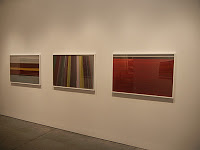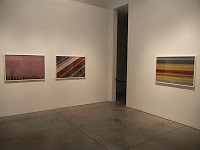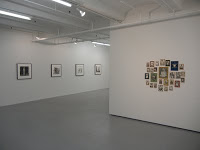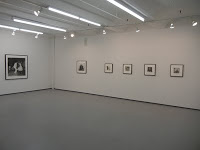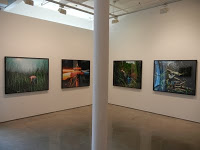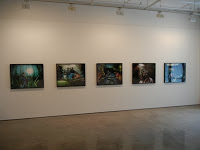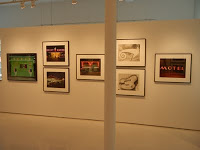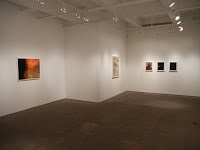One byproduct of my summer long hiatus from writing about photography was that I spent a lot of time outside the echo chamber of the photo and collector communities. I didn’t read the reviews, articles, blog posts, comments and responses in various media that would normally swamp my brain and I didn’t follow the back and forth of the daily flow of ideas inside the bubble. Flat on my back in bed and off the grid, I had plenty of hours to let ideas percolate around in my skull, lingering and gestating, rather than getting flushed into oblivion by the next flashiest thing in the never-ending photo news cycle. The quiet was a good antidote to the continuous static.
Much of my time was spent reading, and nearly all of it occurred on my Kindle because of the issues I was having with my arms. The Kindle is far superior to a paper book if you only have one semi-functional hand to use, since you can prop the device up and easily flip the pages with a single press of a finger, rather than wrestling with both holding the book and somehow grabbing the single sheet of the next page. Spending so much time with this electronic device got me thinking quite a bit about what it was good for, why I used it in the manner I did, and other strange questions about the general nature of electronic media and its implications for the digital incarnations of fine art photography.
If your Kindle is anything like mine, it is an embarrassing slag heap of discarded, disposable literature. I’ve come to understand that this has happened because I only buy books on my Kindle that I have no intention of keeping; if I wanted a permanent copy to read again or for reference, I would buy it in paper, crack the spine, dog ear the pages and put in on my shelf. As a result, my particular device is filled with first run hardcovers that I could buy cheaper and get faster electronically (immediate gratification), plus an astonishingly eclectic assortment of non-fiction, mysteries, thrillers, science fiction and other guilty pleasures that I would have thrown out, never finished, passed along or given to the local library had I purchased them in physical form.
One thing that I have never, ever purchased on the Kindle is poetry. While the world is equally full of forgettable poetry as it is of other literary genres, by its very nature, at least in my mind, the whole point of poetry, especially the kind of good poetry that stays with you, is that you return to it again and again. And of the various forms of literature, the generally shorter length of poetry lends itself nicely to repeated use and deeper explication. This conclusion got me to thinking about a mysterious question: who actually buys poetry on a Kindle? And why would someone purchase something of permanence in a format designed for easy discarding?
The answer I came up with is that poetry makes sense on an electronic device only when that device changes from being a “reader” to being a portable “library”; instead of being read once and passing into nothingness, the work becomes available to be read again and again. This of course works better with a one page poem than it does with The Brothers Karamazov, simply due to the generally smaller investment of time required to fully enjoy the work and the higher likelihood of coming back again to revisit it in the future (how many books have your read more than twice in the entire span of your life?). This relationship between time investment and likely repeatability is even more obvious with music, since we often play individual songs over and over again, sometimes in a manic “can’t hear it enough” frenzy. My iPod was quickly dominated by a “library” usage model, and the reality of having my entire archive at my fingertips has undeniably changed the way I make choices about what to buy and what to listen to at any given moment. If my Kindle were to be used more like a library, I could certainly imagine having “shelves” full of poetry that I could refer to and enjoy from time to time; the problem is that I haven’t ever really considered using the device in this way.
So what does all this have to do with fine art photography? I think the “poetry on a Kindle” problem is very similar to the one facing digital forms of fine art photography. We have never thought that we could or should carry around a library of our favorite fine art photographs in digital form for handy display and reference. But why aren’t fine art photographs analogous to pop songs? Why doesn’t it make sense to want Moonrise and Chez Mondrian and hundreds of others on my iPad or other display device so I could re-experience them repeatedly? Shouldn’t we want to come back to great images, to savor them, and to return to them again and again because of the way they make us think and feel? Shouldn’t we want to show our friends both our current favorites and our long loved gems and discoveries?
Let’s use music and books as examples of how electronic forms have transformed certain media types. In both cases, a physical form is being slowly undermined by an electronic one, and this evolution has happened faster and faster as it has become clearer how to monetize that e-form and as devices have emerged that could be used easily to play the new media. In the case of photography, the first problem is that, unlike music and books, we haven’t figured out how to monetize the digital form of the medium yet, and so right now, any image in its digital form is inherently only consumable and disposable; see it, pay nothing for it, enjoy it, move on, forget it. There is no mechanism or process for “buying” “authorized” or “quality” versions of digital images that haven’t been stolen, scanned, hacked or otherwise used with or without the maker’s consent; it’s a lawless, amorphous land.
But imagine there was a photo equivalent of the digital CD or ebook, call it the digital portfolio if you want, issued directly by and vouched for by the photographer. Just like the old style photo portfolio in a special linen box, it’s a selection of images grouped together (and potentially carefully sequenced), but instead of physical prints, these would be high quality, high resolution JPEGs or whatever technical format we might agree on, perhaps with fancy security features, hidden watermarks or digital rights management, perhaps not (I’ll explain why these might not be needed in a moment). This distinct digital portfolio could be purchased for say $10-15, and individual pictures could be separated out and purchased for 99 cents each, just like a downloadable song. These image files would be stored on my tablet, iPad, laptop or whatever device I might find suitable for image viewing, as the software for displaying photographic images in some kind of library form is already ubiquitous. The underlying behaviour change that is required to enable this photographic revolution is that consumers of digital imagery need to understand and agree that they need to pay something for an image if they want to keep a copy if it. I don’t think this is such a momentous leap, as we’ve already made this same exact leap for music and books.
So where does this grand idea break down? Will it kill off print sales? As a collector, having an electronic portfolio of images on my computer would in no way dampen my enthusiasm for paying for a physical print of one of those images made by the hand of the artist. I don’t believe it will cannibalize print sales to any meaningful extent except perhaps at the very lowest end (sub $500), but will have opposite effect of potentially leading collectors like myself to purchase images we had taken a while to understand or wholly forgotten about (the “try before you buy” effect). If certain pictures stay top of mind and in seeing them again and again I gain a deeper appreciation for their value, I would be more likely to open my wallet and purchase a physical print to hang on my wall. Even when hi-res display technology evolves ahead a few dozen generations, there will always be a market for fine prints, regardless of whether high quality digital copies are floating around or not.
Will there be a wave of unauthorized prints that will dampen the value of the authentic ones? This question is really asking: am I going to go out to my local print lab and have them print me a wall sized version of one of my digital Gursky files? I highly doubt it (especially if security features or industry practices prevent it), as it is the participation of the artist that creates value in the physical print: the process, the tweaking, the signature, the markings etc. Even if the files are unprotected or “in the clear”, the art world already has a well established process for dealing with forgers and fakers: it’s called provenance. Show me the paperwork of where the print was bought or where it came from, and I’ll attribute the appropriate value to its authenticity; no paperwork equals no value.
Would this digitization lessen my enjoyment of physical photography books? I don’t think so, not remotely, even if creativity blossoms in the digital realm. I’d still like to hold the presence in my hands, to enjoy the design aspects of the book form, and to consider the book an art object in both conception and execution. Maybe I’d actually buy a few more books, because I’d have acquired the digital portfolio, and then decided I should “upgrade” to the book for my physical library.
Once you get beyond the primary “why it won’t work” issues, some of the exciting downstream effects that might occur if digital photographic imagery can be monetized start to come forth:
*Artists and estates will be able to generate new digital revenue (i.e. get paid for their work). This could come directly from their own websites, Facebook pages or from online stores that aggregate work from thousands of photographers (the equivalent of iTunes or the Kindle bookstore). Who will be the next unknown photographer or amateur photojournalist who goes viral?
*Galleries can also sell digital portfolios or use them as free or discounted promotional items, sharing the revenue with photographers. This could include a portfolio of all the images of a current show, or the equivalent of the musical “boxed set” or “greatest hits” from an established artist. There could also be exhaustive “reissues” of “back catalog” images, grouped together in portfolios with “liner notes” or other explanations from the artists – the opportunities for creativity in packaging will explode.
*Museums who put together retrospectives and shows can publish groups of images (from their permanent collections or on loan), sharing revenue with the photographers.
*Book publishers can publish groups of images to coincide with a release, again as a supporting, promotional or tie-in device.
*There could be curated selections of images from everyone from scholars or celebrities.
*The “picture of the day” sites and blogs could share revenue with the artists through affiliate programs or referrals.
All of this at price points that would make these images impulse purchases, to be “collected” into a library on your electronic device of choice and enjoyed far into the future. Suddenly, I’ll have my own personal art history lecture on my iPad, all the time. The shuffle-ization and remixing of images in different sequences would become surprisingly easy and exciting, allowing for unexpected connections and contexts. And the “if you like this, maybe you’ll like this” kind of software recommendation engines could start to be employed more fully to introduce people to photographers they are unfamiliar with.
Monetizing the electronic form of fine art photography would I think grow the overall size of the market, especially for emerging and unrepresented photographers, with very little downside to anyone in the food chain, either at the very bottom or the very top. A real revenue/royalty stream would occur from the digital files themselves, and the increased visibility of the images themselves would lead to additional print sales, book sales, lecture opportunities and the like; I think everyone would be better off, most importantly the photographers themselves.
All we need to do is provide a viable alternative to “everything is always free” and start to think to ourselves that “digital” need not inherently mean “disposable”. Fast forward a decade or two and ask yourself whether it seems likely or not that we will routinely view fine art photographs on our always connected devices. To me, it is ridiculously obvious that we will (or maybe already are) and that all kinds of new distribution and storage models will soon exist for these digital incarnations. The question that then remains is what are the mechanisms that will need to be put in place now to facilitate the smooth operation of that future reality, and what are the steps we can take today to move in the right direction most efficiently.
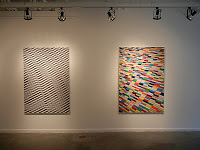 Collector’s POV: The large 71×49 prints in this show are priced at $20000 each. The suite of 5 smaller 20×14 prints is $11000. Fischer’s work has very little secondary market history, so gallery retail remains the best option for collectors interested in following up.
Collector’s POV: The large 71×49 prints in this show are priced at $20000 each. The suite of 5 smaller 20×14 prints is $11000. Fischer’s work has very little secondary market history, so gallery retail remains the best option for collectors interested in following up.



